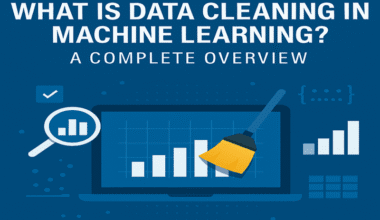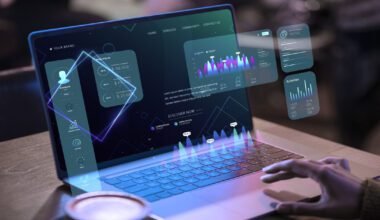Summary: Python and Ruby are both easy-to-learn languages, but Python is far more suited for data science. With strong libraries, community support, and industry demand, Python dominates in data analytics, machine learning, and AI, while Ruby remains best for web development.
Introduction
Programming languages are the backbone of modern technology. From building websites to analyzing data, they play a vital role in the tech world. Among many options, Ruby and Python have become two popular choices for developers.
While both languages are easy to learn and widely used, they serve different purposes. Python has taken the lead, especially in Data Science. Ruby, on the other hand, is better known for web development.
In this blog, we’ll explore the biggest difference between Ruby and Python in Data Science, why Python is more suitable for data tasks, and what makes it a top choice for beginners and professionals.
To give you an idea of how important programming is today, consider this: The global programming language market was valued at $188.86 billion in 2023. It’s expected to grow to $379.91 billion by 2030, showing a 10.5% yearly growth rate. That means there’s a growing demand for people who know these languages.
Key Takeaways
- The main difference between Ruby and Python lies in their use—Python excels in data science, Ruby in web apps.
- Python’s ecosystem includes data-friendly libraries like NumPy, Pandas, and Scikit-learn.
- Ruby lacks the tools and speed needed for data-heavy applications.
- Python is easier to learn and more versatile for data professionals and beginners.
- Enrolling in a Python-based Data Science course, like those from Pickl.AI, boosts your tech career.
Quick Overview: Ruby vs. Python
Before we look at their differences, let’s understand what Ruby and Python are.
What is Ruby?
Ruby is a programming language that is mostly used to build web applications. It became popular thanks to a powerful tool called Ruby on Rails, which helps developers build websites faster and more efficiently.
Some well-known websites built with Ruby include GitHub, Shopify, and Airbnb.
Pros of Ruby:
- Easy to read and write.
- Great for building web apps quickly.
- Strong community support.
Cons of Ruby:
- Not commonly used in data-related fields.
- Slower performance in data-heavy applications.
- Smaller library support for Data Science.
What is Python?
Python is a general-purpose programming language, which means it can be used for many things, including web apps, automation, machine learning, and data science.
Python is known for being simple and clear. It’s easy to learn, even for people with no tech background.
Many big companies like Google, Instagram, and YouTube use Python in their tech stack.
Pros of Python:
- Easy to learn and use.
- Rich libraries for Data Science (like NumPy, Pandas, Matplotlib).
- Widely used in AI and machine learning.
Cons of Python:
- Slower in execution compared to some other languages.
- Not always the best for mobile app development.
- May use more memory in some cases.
The Biggest Difference: Use in Data Science
Python stands out in data science. Ruby is excellent for building web applications but lacks the tools needed for data analysis, machine learning, and artificial intelligence.
Why Python Wins in Data Science:
- Built-in Libraries: Python has many ready-made tools like NumPy, Pandas, Scikit-learn, and Matplotlib that make data handling, analysis, and visualization easy.
- Community Support: Python has a large community that constantly updates and adds new tools for data science.
- Ease of Use: Python’s code is simple and readable, perfect for analyzing large datasets.
- Versatility: Python is used in data science, web development, automation, finance, and more.
Ruby doesn’t have as many specialized libraries for data work. It’s mostly used for web development. While you can do data science with Ruby, it’s far less practical.
Key Similarities Between Ruby and Python
Even though they’re different in how they’re used, Ruby and Python share a few things in common:
- Cross-Platform: Both can run on Windows, Mac, and Linux.
- High-Level Languages: Their code is easy to read and write, similar to English.
- Interpreted Languages: You don’t need to compile the code before running it.
- Dynamic Typing: You don’t need to define data types beforehand.
- Object-Oriented: Both support object-oriented programming, which helps keep code organized.
- Strong Communities: Both languages are supported by active developer communities.
- Standard Libraries: Each comes with built-in tools that make development faster.
Which Language Should Beginners Choose?
If you’re new to programming and especially interested in data science, Python is a better choice. It is easier to learn, more versatile, and has more job opportunities.
However, Ruby might be a good place to start if you focus on web development. Ruby on Rails is a strong framework that helps developers build websites faster.
Recommendation:
- Start with Python if your goal is to work in data science, machine learning, or AI.
- Start with Ruby if you’re interested in building websites and want to learn web development first.
But remember — learning either of them will build a solid base in programming.
Learning Python: The Smart Career Move
With Data Science becoming a fast-growing career path, many people are taking online Python courses to upskill themselves.
Here’s why enrolling in a Python course for data science makes sense:
- Courses cover both theory and real-world projects.
- Professional instructors can guide you through complex topics.
- Certifications can boost your resume and job chances.
When choosing a course, look at:
- Course content: Ensure it includes Python basics and data science tools.
- Instructor expertise: Good teachers make learning easier.
- Hands-on projects: Practice helps reinforce what you learn.
Final Thoughts
Both Ruby and Python are great programming languages. They are simple, flexible, and have strong communities. However, when it comes to data science, Python is the clear winner.
If you’re serious about entering the world of data science, start with Python. It will open more doors, help you analyze data better, and keep you ahead in the tech world.
And remember, the demand for skilled programmers is growing fast. With the programming language market expected to reach nearly $380 billion by 2030, now is the perfect time to start learning.
For aspiring data professionals, mastering Python unlocks endless possibilities in machine learning, AI, and analytics. To kickstart your journey, consider enrolling in Data Science courses by Pickl.AI.
These courses provide hands-on learning, expert mentorship, and industry-recognized certification. With Python as your foundation, you’ll be future-ready in the booming tech job market. Choose smart—choose Python with Pickl.AI.
Frequently Asked Questions
What is the biggest difference between Ruby and Python in Data Science?
The biggest difference is Python’s strong ecosystem of data-focused libraries like Pandas, NumPy, and Scikit-learn. Ruby lacks such specialized tools, making Python the preferred choice for data science applications.
Can Ruby be used for Data Science projects?
Technically, yes. However, Ruby is not ideal for data science due to limited library support and slower performance. Python offers far better resources, making it more practical for data-driven work.
Why is Python more popular than Ruby in Data Science?
Python is popular in data science because of its simplicity, scalability, and comprehensive libraries. Its supportive community and applications in AI and ML also make it the top language for data professionals.






